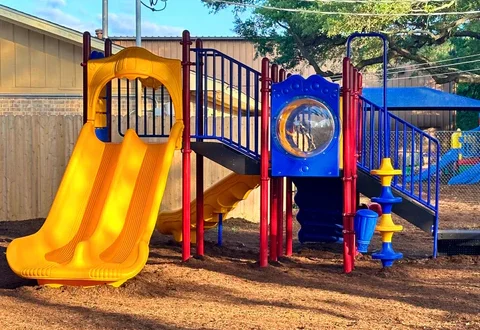Physical development during the early years lays the groundwork for a child’s coordination, strength, health, and independence. Supporting both gross motor (big movements) and fine motor (small hand movements) skills helps children grow stronger, more confident, and ready for future challenges — from writing to sports.
Here are 10 essential tips to promote healthy physical growth in toddlers and preschoolers:
1. Encourage Active Play Every Day
Children need at least 1–2 hours of active play daily to build strength and coordination.
Try:
-
Climbing
-
Running games
-
Obstacle courses
-
Jumping on a soft mat
2. Practice Fine Motor Skills Through Play
Fine motor skills prepare children for writing, eating, and dressing themselves.
Activities to try:
-
Stringing beads
-
Cutting paper with safety scissors
-
Building with small blocks
-
Drawing and coloring
3. Limit Screen Time
Too much screen time can reduce opportunities for movement and physical play. The American Academy of Pediatrics recommends no more than 1 hour per day of screen time for children aged 2–5.
Tip: Replace screens with puzzles, pretend play, or outdoor time.
4. Let Kids Walk, Climb, and Explore Safely
Avoid carrying or over-restricting toddlers. Instead, give them chances to move independently and build balance.
Tip: Use toddler-friendly stairs, climbing structures, and walking paths under supervision.
5. Encourage Self-Feeding
Letting children feed themselves helps strengthen hand-eye coordination and confidence.
Try:
-
Spoons and forks with toddler-friendly handles
-
Finger foods
-
Pouring drinks into small cups (with help)
6. Teach Healthy Hygiene Through Movement
Brushing teeth, washing hands, and dressing are all chances to develop motor skills.
Make it fun:
-
Sing while brushing
-
Use visual steps for routines
-
Let kids try zippers, buttons, and Velcro
7. Use Music and Movement
Dancing, clapping games, and action songs build coordination and rhythm.
Favorites include:
-
“Head, Shoulders, Knees, and Toes”
-
Freeze dance
-
Marching to a beat
8. Involve Children in Household Tasks
Simple chores teach responsibility and develop physical skills.
Great activities:
-
Sweeping with a child-sized broom
-
Carrying laundry
-
Wiping tables
9. Ensure Adequate Rest and Nutrition
Strong bodies need fuel and recovery time.
Tips:
-
Offer protein-rich snacks, fruits, and vegetables
-
Maintain a consistent nap and bedtime schedule
10. Track Development, But Avoid Pressure
All children develop at their own pace. Celebrate progress, and offer help — not pressure.
If concerned: Speak with a pediatrician or child development specialist about delays in walking, coordination, or hand use.
Final Thought
Supporting a child’s physical development doesn’t require fancy equipment — just time, space, and encouragement. Movement builds strength, coordination, and confidence that will serve children for life.





